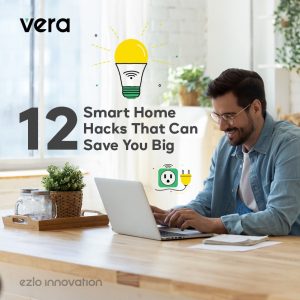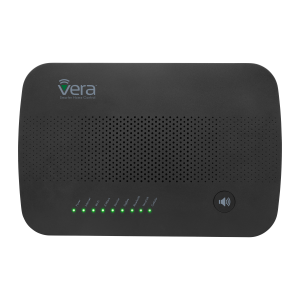Controlling Lights with Ezlo to Save Energy: Part 2 – Dimming Lights
- April 07, 2014
- by Ezlo Admin
Dimming Lights to Save Energy With Your Vera System
In the previous blog, we looked at the three commonly used lighting technologies — incandescent, CFL, and LED — and explained why LED is the best, though initially most expensive, of the three. (Over time, the long-lasting LED bulbs can be less expensive, but it may take 50,000 hours to get your money’s worth!)
Now let’s turn our attention to the Lamp Dimmer modules that control these lights as part of your Vera Smarter Home Automation system. If you don’t already have a Lamp Dimmer in your Vera system, check these out at the Vera store. (There are other makes and models of compatible dimmers, such as those at Amazon and Tiger Direct — just about any dimmer that uses Z-Wave communications can work with your Vera system.)
When you dim lights using your Vera Dashboard or mobile apps, you’ll see a percentage stating the amount of dimming taking place, from 0 to 100%, with 100% representing full brightness. But what these numbers also represent is the approximate percentage of the full amount of electricity the bulb would otherwise use. So, for example, an incandescent bulb rated at 60 watts will use about 30 watts when the dimmer is set at 50%. Those are the energy savings from using a dimmer.
But as explained in our previous blog bulb technology also plays a big role in determining how much energy is consumed. The more efficient LED bulb technology can produce the same amount of light with just 10 watts that an incandescent bulb produces with 60 watts. So a 10-watt LED bulb at full power produces more light than a 60-watt bulb at 50% dim. And as explained previously, CFL bulbs are also very energy efficient, but CFLs don’t always dim properly. Of course, dimmers serve many other purposes besides energy efficiency: to set the mood, to create a low background light while watching television, to help supplement daylight in corners of rooms, for use as night lights, hallway lights, etc. But if your goal is purely to save energy, you should be using LED bulbs, or CFLs if the cost of LEDs is prohibitive.
If your home receives a good amount of natural daylight, you’ll probably want to set dimmers to full brightness just after sunset, because that’s when we’re looking to have artificial light replace the daylight we’re losing. You can set this up based on a timer schedule, but even better is Vera’s ability to automatically change dimmer settings based on the actual times of sunrise and sunset in your locality. A couple of hours later, after darkness sets in, you’ll find you can dim the lights significantly, perhaps as low as 50 or 60%, and often they’ll still seem adequately bright.
This is because of the way our eyes work. During the day, the eyes’ irises get very small, allowing just a bit of the bright daylight to come through. When things get darker at night, our irises open up, to let more light in, but the process is gradual and takes about 20 minutes. Ever walk into a dark movie theater from daylight outside and find you can’t see a thing? But then a few minutes later you see fine inside the theater — that’s the same phenomenon. You can take advantage of this to save energy.
Psychological strategies such as dimming lights for dinner time, and then bringing them back up a bit higher, but not too full, can make the dimming seem more palatable to household members. No one enjoys having light taken away from them (unless it’s bedtime!), most people enjoy seeing the light level increase.
Speaking of the psychology of lighting, as LED lights catch on, one feature that may soon be coming to home automation is the ability to control the color temperature of these lights too. People tend to prefer “warmer” light at night, but during the day, lights that are “cooler” and match daylight better are preferable. Stay tuned.
Explained why LED is the best, though initially most expensive, of the three. (Over time, the long-lasting LED bulbs can be less expensive, but it may take 50,000 hours to get your money’s worth!)




